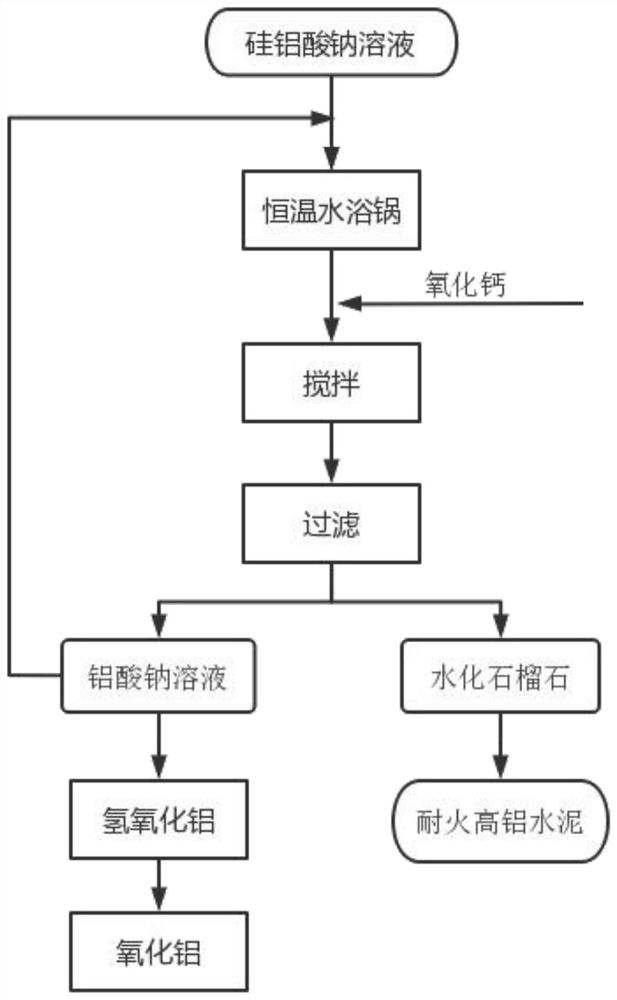Method for separating aluminum and silicon from solid waste coal gangue
A technology of coal gangue and solid-liquid separation, applied in chemical instruments and methods, silicate, silicon oxide and other directions, can solve problems such as mixing, and achieve the effect of increasing ion activity and obvious economic value
- Summary
- Abstract
- Description
- Claims
- Application Information
AI Technical Summary
Problems solved by technology
Method used
Image
Examples
Embodiment 1
[0037] Such as figure 1 As shown, coal gangue is placed in a stainless steel container through alkali low-temperature activation treatment, dissolved in hot water, separated to obtain a solid phase, separated to obtain a liquid phase after adding a strong acid, and separated after a series of treatments after adding a strong base; The liquid phase is a mixed solution of sodium metaaluminate, sodium silicate, sodium hydroxide, sodium sulfate and potassium sulfate, which is kept in a constant temperature water bath at 90°C, and then 4g / L calcium oxide is added to the sodium aluminosilicate solution, and stirred After 120 minutes and 60 minutes of ultrasonic reaction, the solution is filtered to separate the liquid phase from the solid phase, and the pure aluminum-rich product is obtained by repeated washing to achieve the purpose of desiliconization. Under this process condition, the desiliconization rate can reach more than 90%, and the obtained sodium aluminate solution has hi...
PUM
 Login to View More
Login to View More Abstract
Description
Claims
Application Information
 Login to View More
Login to View More - R&D
- Intellectual Property
- Life Sciences
- Materials
- Tech Scout
- Unparalleled Data Quality
- Higher Quality Content
- 60% Fewer Hallucinations
Browse by: Latest US Patents, China's latest patents, Technical Efficacy Thesaurus, Application Domain, Technology Topic, Popular Technical Reports.
© 2025 PatSnap. All rights reserved.Legal|Privacy policy|Modern Slavery Act Transparency Statement|Sitemap|About US| Contact US: help@patsnap.com

